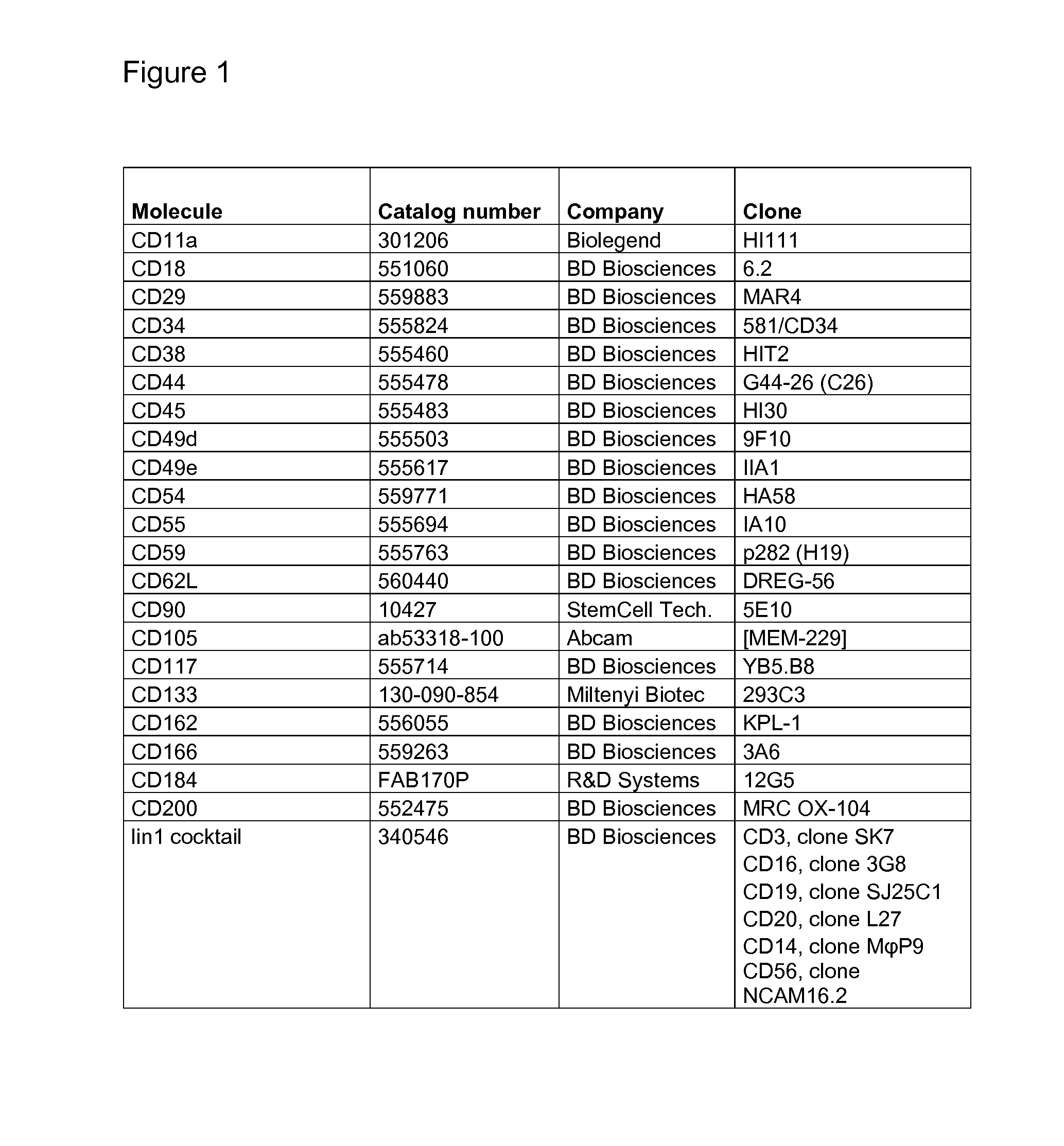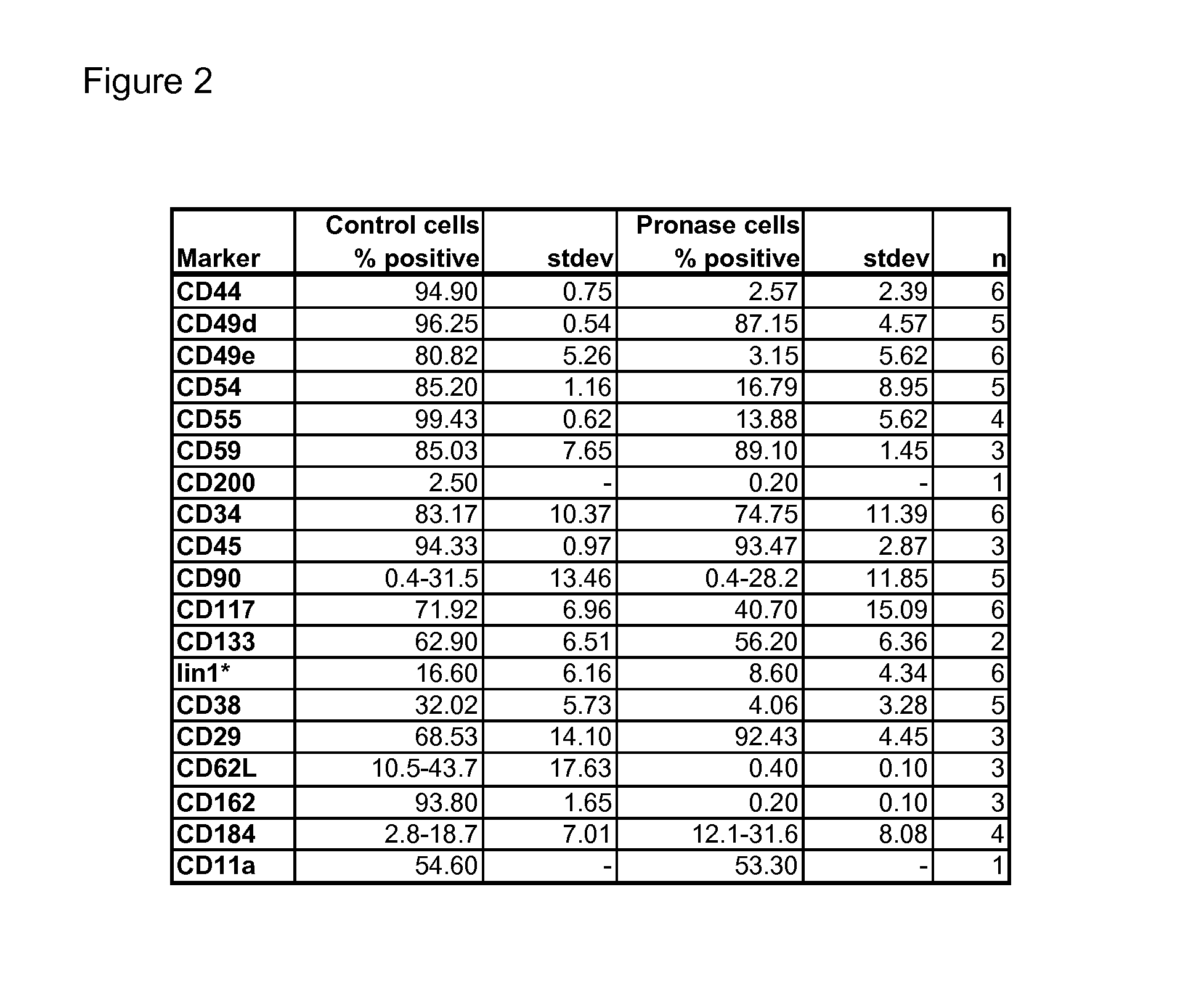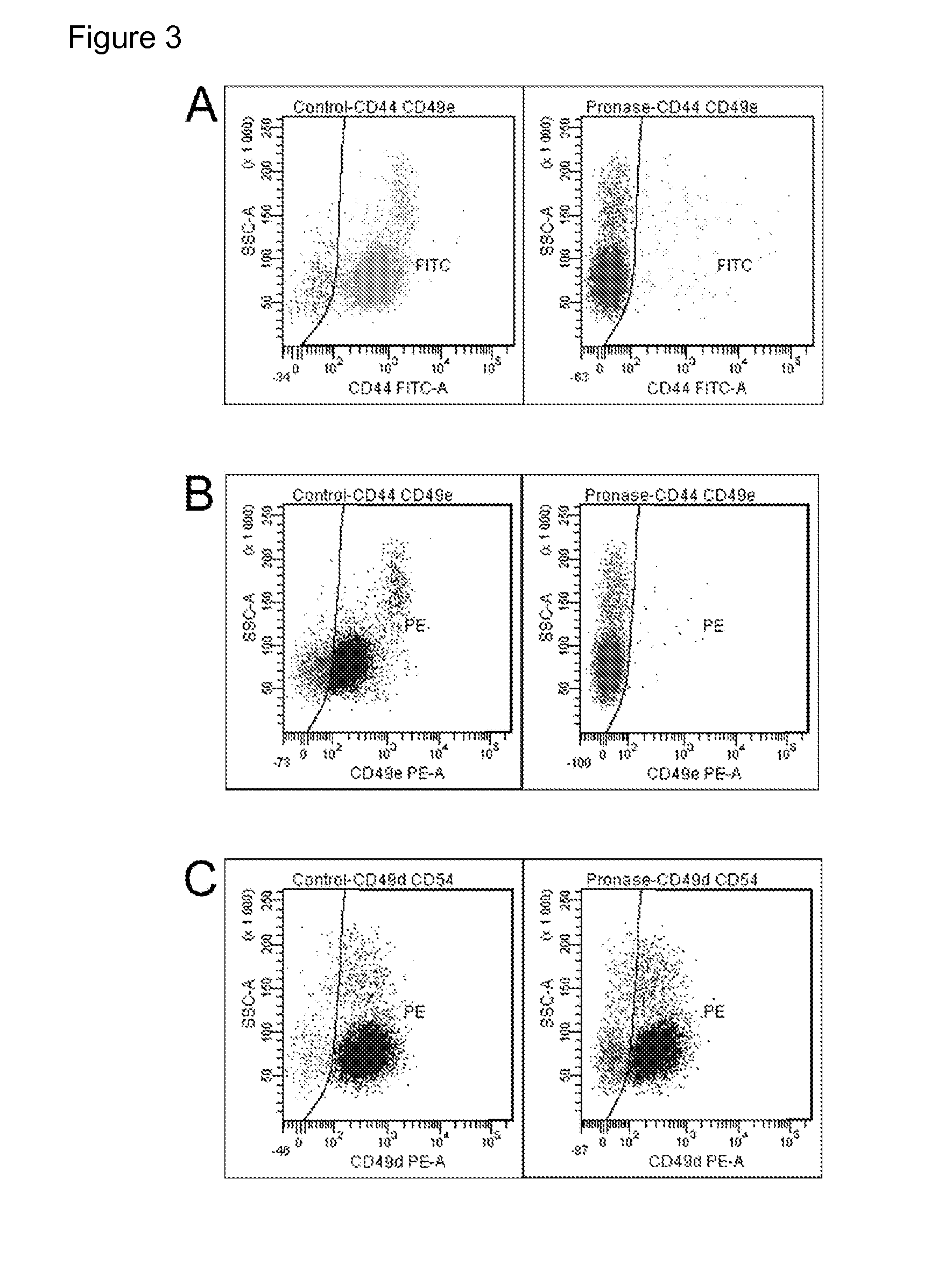Use of a Proteolytic Enzyme
a proteolytic enzyme and enzyme technology, applied in the field can solve the problems of high clinical complications rate, and achieve the effect of preventing and hiccuping the transition of hematopoietic stem cells
- Summary
- Abstract
- Description
- Claims
- Application Information
AI Technical Summary
Benefits of technology
Problems solved by technology
Method used
Image
Examples
example 1
Changes of Cell Surface Epitopes in Hematopoietic Stem Cells After Pronase Treatment
Materials and Methods
[0069]The isolation of human umbical cord blood (UCB)-derived mononuclear cells (MNCs) was done with Ficoll-Hypaque density gradient (Amersham Biosciences, Piscataway, N.J.) according to the manufacturer's instructions. After the isolation, CD34 positive cells were enriched using a single-column separation kit (Direct CD34 Progenitor Cell Isolation-kit, #130-046-702, Miltenyi Biotec), according to the manufacturer's instructions.
[0070]Pronase treatment: The cells were treated in 2 mL of 0.5% (w / V) pronase (Roche, #10165921001) in PBS without Ca & Mg, pH 7.2, supplemented with 0.25 mM EDTA. The cells were pelleted by centrifugation (300×g, 5 min) and resuspended in PBS without Ca & Mg, pH 7.2+0.3% human serum album (HSA, Albuman 200 g / L, Sanquin) or bovine serum albumin (BSA, ultrapure, Sigma). Cell number and viability were determined for all samples after every test by nucleocou...
example 2
Changes in Cell Surface Epitopes of Cord Blood Mononuclear Cells (MNC) After Pronase Treatment
Materials and Methods
[0075]The isolation of human UCB MNCs was done with Ficoll-Hypaque density gradient (Amersham Biosciences, Piscataway, N.J.) according to the manufacturer's instructions.
[0076]Pronase treatment: 1×108 MNC were treated in 10 mL with 0.5% (w / v) pronase (Roche) in PBS without Ca & Mg, pH7.2 +0.25 mM EDTA for 5 min. The control cells were in 0.25 mM EDTA-PBS buffer without the pronase treatment. The reaction was stopped with 30 mL of 0.3% Human Serum Albumin in 2 mM EDTA+PBS. Cells were pelleted with centrifugation 500×g for 5 min. The cell number and viability were determined for all samples after every test by nucleocounter.
Results
[0077]Recoveries for UCB MNC, originally 1×108 cells, after pronase treatment and centrifugation were 1×108 for the control sample and 0.9×108 for pronase-treated sample. The viability was 99.9% for both.
[0078]The pronase treatment reduced the e...
example 3
Optimizing the Pronase Treatment
Materials and Methods
[0079]The isolation of human UCB MNCs was done with Ficoll-Hypaque density gradient.
[0080]Pronase treatment: For comparison, UCB MNCs were treated with pronase in the “buffer” (=PBS without Ca & Mg, pH 7.2+0.25 mM EDTA) and in the “culture medium” (=αMEM, Gibco +0.5% human serum albumin) with different concentrations and incubation times. In the buffer, the pronase treatments included 0.5%, 0.25% and 0.1% (w / v) pronase for 5 min, 3 min, and 1 min each. In the culture medium the treatments were the same except 0.1% pronase was left out. For each treatment, 1×106 MNCs were used in the total volume of 2 mL. The control cells were in the buffer or medium alone, respectively. The reaction was stopped with 10 ml of 0.3% BSA in 2 mM EDTA+PBS. The cells were pelleted by centrifugation, 300×g for 5 min. The cell number and viability was determined for the strongest treatments (0.5% pronase for 5 min) and controls by nucleocounter. Addition...
PUM
 Login to View More
Login to View More Abstract
Description
Claims
Application Information
 Login to View More
Login to View More - R&D
- Intellectual Property
- Life Sciences
- Materials
- Tech Scout
- Unparalleled Data Quality
- Higher Quality Content
- 60% Fewer Hallucinations
Browse by: Latest US Patents, China's latest patents, Technical Efficacy Thesaurus, Application Domain, Technology Topic, Popular Technical Reports.
© 2025 PatSnap. All rights reserved.Legal|Privacy policy|Modern Slavery Act Transparency Statement|Sitemap|About US| Contact US: help@patsnap.com



